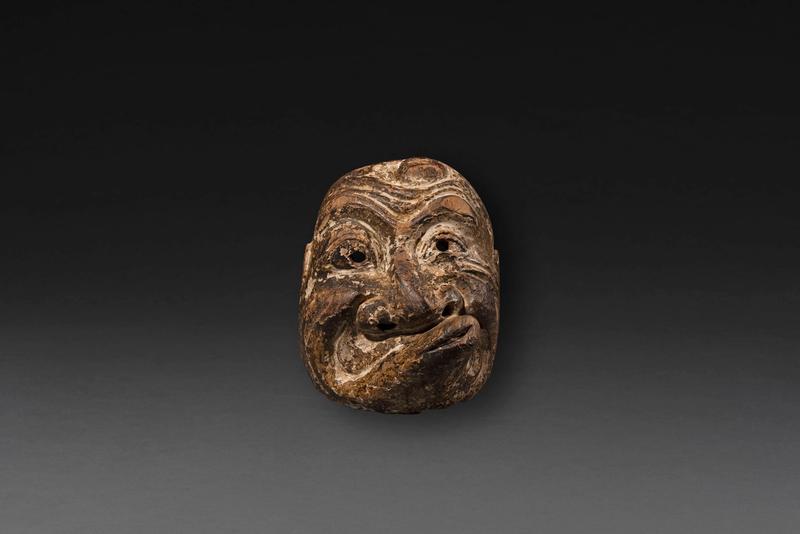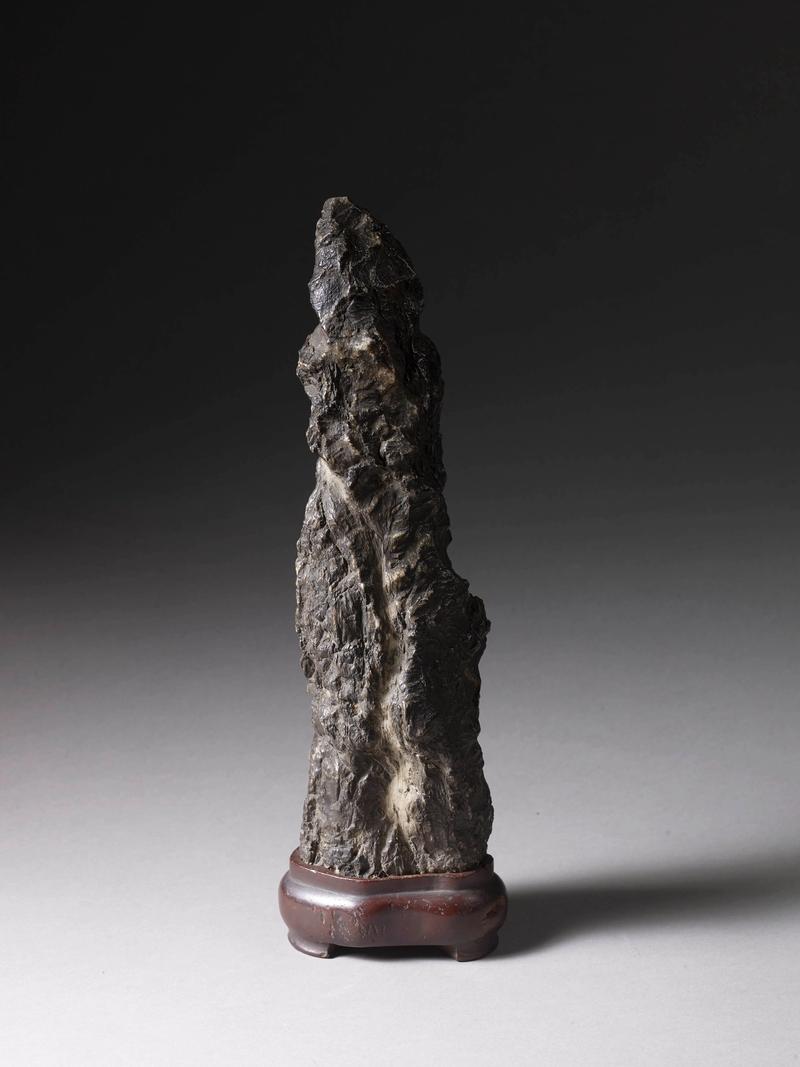A red lacquer Kamakura-bori dai-kogo (large incense box), the cover decorated with hōsōge (stylised flower and foliage), the sides with a key-fret design, all on a gilt ground, the base and interior in black lacquer.
The base inscribed in red lacquer: Ryusoin, Kohan dai (at the time of the priest Kohan), shuho (repair), nushi Toda Katsuzo (lacquerer).
Japan, 15th/16th century, Muromachi/Momoyama period.
Provenance: Ryusoin temple, Shizuoka prefecture, Japan.
In the 13th century carved lacquer boxes and dishes were brought by monks from China for use in Zen temples. This lacquerware was formed from many layers which was then carved with a design. Inspired by these pieces the famed sculptor Koun (act. early 13th century) along with other Japanese artisans, started to produce Buddhist objects in imitation of this newly acquired lacquerware. This came to be known as kamakura-bori, a style of lacquerware where the design is carved into a wood base and then coated with lacquer, normally black as a primer and then red. The name derives from the city where it was first produced.
Many temples including Nanzen-ji, Chion-ji and Konren-ji in Kyoto still have dai-kogo along with other pieces produced in the late Kamakura (1185-1333) to Muromachi period (1336-1573) in their collections. Not only for religious use, kamakura-bori became popular for aristocrats and also for tea masters from the Muromachi period onwards.
Ryusoin temple was founded in 1485 by the Zen master Taiso Shojun. From the style of this dai-kogo, it would be reasonable to assume that it was made at the time of its foundation where it remained in use as one of the temple treasures for many generations.
The base of the box bears the name of the 23rd abbot of the temple, Dohan Kohan (d. 1803) who acceded as head priest in the winter of 1792. Boxes of this type are known to have been selected for use in such ceremonies and it is possible that this piece was re-lacquered to restore it to its former glory for this special occasion.
A similar Kamakura-bori dai-kogo (large incense box) from the Muromachi period is housed in the Kanagawa Prefectural Museum of Cultural History.
Works of Art

A wood Noh mask of Koomote

A bronze flower vessel

A Suiseki (viewing stone)

A kakebotoke

A ceramic te-aburi (hand warmer)

A wood Kyōgen mask of Usobuki

A suiseki (viewing stone) of vertical form with a natural striation resembling a waterfall, with wood stand

A Chinese bronze censer

A Tokoname storage jar

A ceramic vase by Makuzu Kōzan II

A Suiseki (viewing stone)

A Suiseki (viewing stone)

A Chinese Suiseki (viewing stone)

A bronze flower vessel of mimikuchi

A pottery kake hanaire (hanging flower vessel)

A red lacquer Kamakura-bori dai-kogo (incense box)

A Lacquered Shield

A bronze brazier

A bronze hanging flower vessel

A black lacquer bon (tray)

A bronze brazier

An iron nyoi

A Tokoname storage jar









